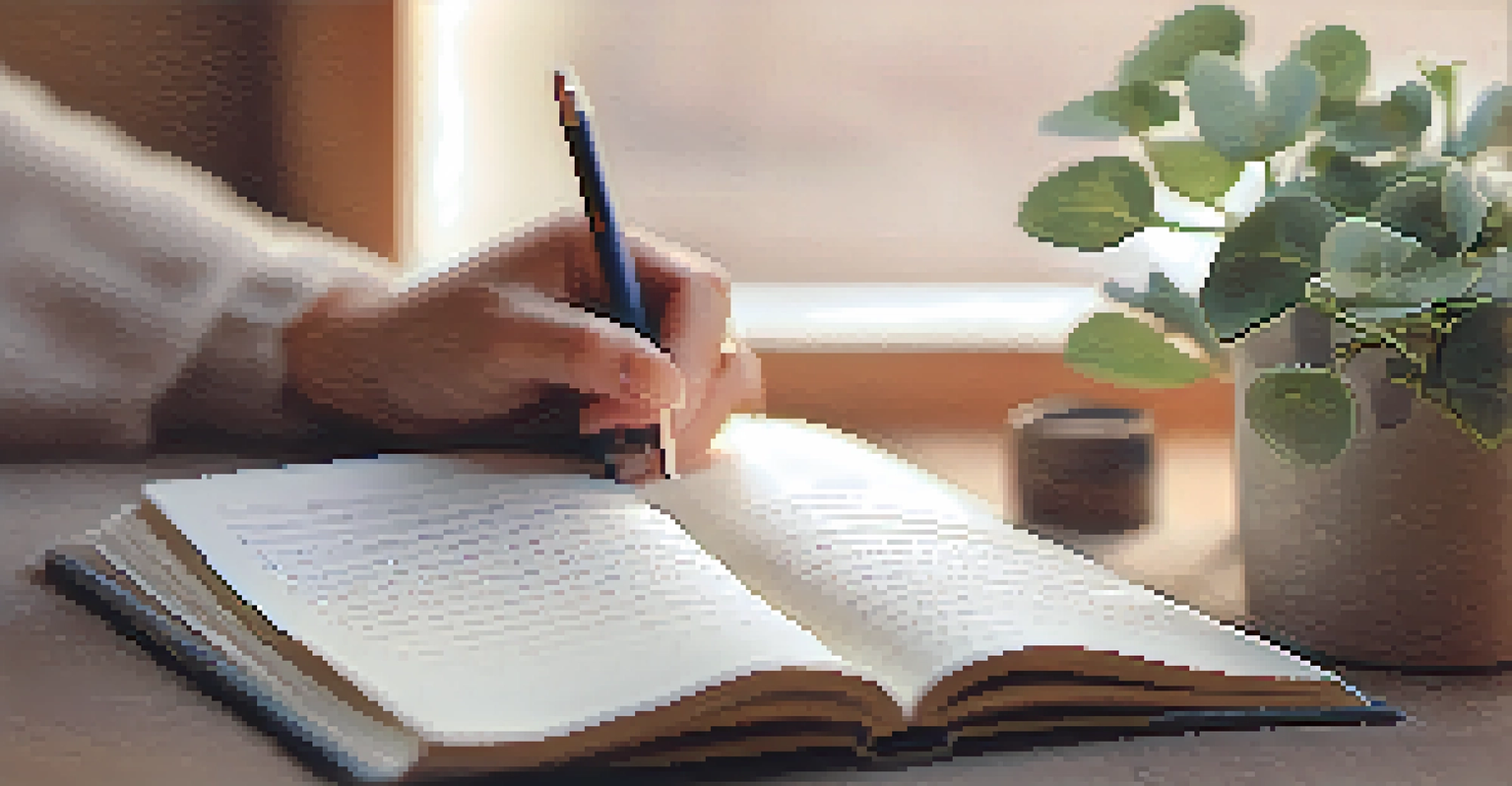Five Simple Mindfulness Techniques to Reduce Anxiety

Understanding Mindfulness and Its Benefits
Mindfulness is the practice of being fully present in the moment. It involves paying attention to your thoughts, feelings, and bodily sensations without judgment. This simple act can create a sense of calm and help reduce anxiety.
Mindfulness isn’t difficult. What’s difficult is to remember to be mindful.
When we practice mindfulness, we tune into our experiences rather than getting lost in worries about the future or regrets about the past. This shift in focus can lead to a greater sense of control over our emotions.
By incorporating mindfulness into our daily routine, we can cultivate resilience against anxiety and improve our overall well-being. It's like training a muscle; the more you practice, the stronger it becomes.
Deep Breathing: Your Instant Calm Tool
Deep breathing is one of the easiest mindfulness techniques to implement. Simply find a comfortable position, close your eyes, and take a slow, deep breath in through your nose, filling your lungs completely. Then, exhale gently through your mouth.

This technique helps to activate your body's relaxation response, reducing heart rate and lowering blood pressure. It can be especially useful during moments of high anxiety, allowing you to regain composure.
Mindfulness Reduces Anxiety
Practicing mindfulness helps individuals stay present, reducing anxiety by fostering a sense of control over emotions.
Try to practice deep breathing for just a few minutes each day. Over time, you'll likely notice a significant reduction in your overall anxiety levels, making it easier to handle stress when it arises.
Body Scan: Connecting with Your Physical Self
A body scan is a mindfulness technique that encourages you to bring awareness to different parts of your body. Start by lying down comfortably, then focus on your toes, gradually moving up to your head, noticing any sensations.
Gratitude turns what we have into enough.
This practice not only helps to ground you in the present moment but also reveals areas of tension or discomfort that you may be holding. By acknowledging these sensations, you can work on releasing physical stress.
Incorporating a body scan into your routine can create a deeper connection with your body, helping to alleviate anxiety by fostering a sense of acceptance and understanding of your physical state.
Mindful Walking: Moving Meditation
Mindful walking is a wonderful way to combine physical activity with mindfulness. As you walk, focus on the sensations of your feet touching the ground, the rhythm of your breath, and the sights and sounds around you.
This technique helps you to stay grounded in the present while also providing the benefits of exercise. It allows you to clear your mind and release built-up tension as you move.
Deep Breathing for Instant Calm
Deep breathing activates the body's relaxation response, making it an effective technique to manage anxiety in stressful moments.
Next time you're feeling anxious, take a short walk in a park or simply around your home. You'll likely find that the combination of movement and mindfulness helps to lift your mood and calm your mind.
Journaling: Putting Your Thoughts on Paper
Journaling is a powerful tool for mindfulness that can help you process your emotions and reduce anxiety. By writing down your thoughts and feelings, you create a space to explore what's troubling you.
This practice encourages self-reflection and can help you identify patterns in your anxiety, enabling you to address the root causes. It’s like having a conversation with yourself, allowing for deeper insights.
Try to set aside a few minutes each day to jot down your thoughts. Whether it's a daily gratitude list or free writing, this technique can serve as a release valve for anxious feelings.
Gratitude Practice: Shifting Your Focus
Practicing gratitude is a simple yet effective mindfulness technique that can significantly reduce anxiety. By consciously acknowledging what you are grateful for, you shift your focus from worries to positive aspects of your life.
Consider keeping a gratitude journal where you write down three things you appreciate each day. This small act can help cultivate a more positive mindset and counteract feelings of anxiety.
Gratitude Shifts Your Perspective
Keeping a gratitude journal can transform your mindset by focusing on positive aspects of life, which helps counteract anxiety.
Over time, this practice can change your perspective, helping you to see challenges as opportunities for growth rather than sources of stress.
Final Thoughts: Making Mindfulness a Habit
Incorporating mindfulness techniques into your daily life doesn’t have to be overwhelming. Start small by choosing one or two methods that resonate with you and gradually build from there.
Remember, mindfulness is a journey, and it's perfectly okay to have days when it feels challenging. The key is to be patient with yourself and recognize that every effort counts.

As you practice these techniques, you'll likely notice a decrease in anxiety and an increase in overall well-being. Embrace the journey and allow mindfulness to become a natural part of your life.